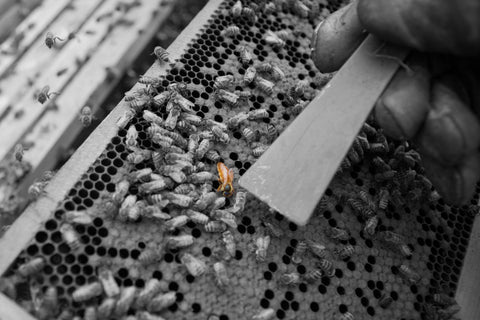My hive has queen cells & a laying queen, now what?
If you have a laying queen in your hive, verified by seeing her, or you are seeing plenty of healthy eggs, larva & brood, and you are seeing queen cells, there are a few things you need to do.
Read “Queen cells vs Queen cups”. Make sure what you are seeing are actually queen cells.
Read “Identifying drone layers” to make sure you don’t have a drone layer laying eggs rather than a queen. Photo: Drone brood by a drone layer

If neither of the above are relevant, then typically 1 of 2 things are happening.
1- If your hive has a newly introduced (last 1-2 weeks) queen, bees can still raise queen cells as the new queen’s pheromones fully develop. If that is the case, simply wipe out the developing queen cells.
2. If the queen is not new, chances are they are raising supersedure cells to replace a failing queen. Verify they aren’t swarm cells by reading “Swarm Cells vs. Supersedure Cells”. If they are supersedure cells, then it is best to order a new queen quickly, wipe out the queen cells, remove the old queen when the new one arrives, and install a new queen in the hive.

Order Queens Here!
NOTE: It only takes the bees 12 days to raise a new queen when they start with a 24 hour old larva, so you don’t have a lot of time to replace the queen. If you already see capped queen cells, gently uncap one of them. If there is a fully developed white pupa in the cell, you will need a new queen within 2-3 days, otherwise it will be too late and the new queens will begin hatching out by the time you get a new queen. If the pupa is already turning brown, it’s too late...they usually hatch within 1-2 days. Chances are if you try to wipe out all the queen cells, you will most likely miss one, and that virgin queen will kill the queen you introduce.

